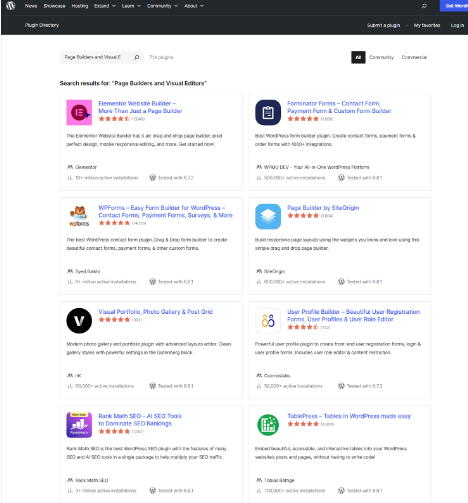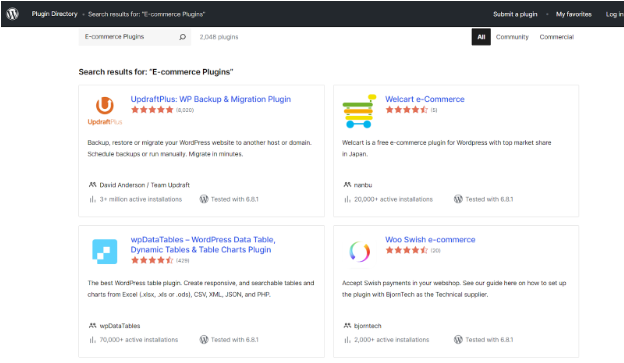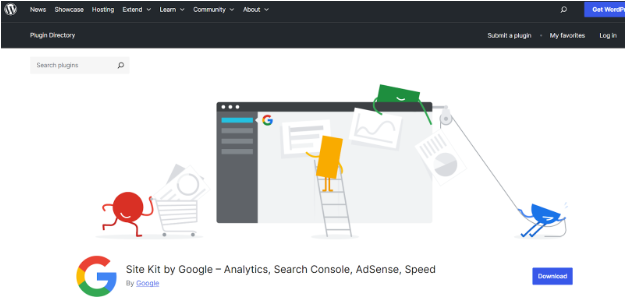The short answer is that some plugins do slow down your site, while others improve performance. The widespread belief that WordPress plugins automatically hurt your website speed is one of the most persistent myths in web development.
After managing numerous high-traffic WordPress websites and conducting extensive performance testing, I’ve discovered that plugin impact on site speed depends entirely on how they’re coded, configured, and maintained. A well-optimised site can run dozens of efficient plugins faster than a poorly managed site with just five resource-heavy ones.
This comprehensive guide will help you understand exactly which plugins affect your site speed and, more importantly, how to choose and optimise plugins for maximum performance. You’ll learn practical testing methods, optimisation strategies, and management techniques that professional developers use to maintain lightning-fast WordPress sites.
Understanding WordPress Plugin Performance Impact
Plugin performance hinges on their code execution within WordPress’s loading sequence—every active plugin consumes server resources to modify or enhance functionality.
How WordPress Plugins Work
WordPress plugins function like applications that extend your website’s core functionality. When someone visits your site, WordPress follows a specific loading sequence:
- Core WordPress files load from your server
- Active plugins initialise and execute their code
- Theme files render the visual presentation
- Content displays to your visitor
Each active plugin runs PHP code that consumes server resources, including memory, processing power, and database connections. The critical factor isn’t whether you use plugins, but how efficiently they execute their tasks.

WordPress provides hooks and filters through its Plugin API, allowing developers to modify existing functionality or add new features. Well-coded plugins use these systems efficiently, while poorly written ones can create performance bottlenecks.
Choosing the right plugins is key to keeping your WordPress site fast and responsive. Not all plugins are built the same—some are lightweight and optimized, while others can affect load times significantly. To help you make smarter choices, this WordPress resource hub offers tips, plugin reviews, and performance guides. Exploring these insights can save you time and prevent common speed issues.
Resource-Heavy Plugin Categories
Certain plugin types are inherently more resource-intensive, though quality implementations can minimise their impact:
Page Builders and Visual Editors. These plugins often generate bloated code and load extensive CSS/JavaScript files. Popular builders like Elementor or Divi can add 500KB+ to page sizes, but optimised alternatives like GenerateBlocks maintain much lighter footprints.

Social Media Widgets Social sharing buttons and feed displays frequently make external API calls that can timeout or delay page loading. Each social platform request adds 200- 500ms to load times without proper caching.
E-commerce Plugins, WooCommerce and similar platforms add substantial functionality but require careful optimisation. Cart calculations, inventory checks, and payment processing can generate dozens of database queries per page view.

Security and Backup Plugins. These tools perform essential but resource-intensive tasks like malware scanning and file monitoring. The key is scheduling heavy operations during low-traffic periods rather than during active page loads.
The Myth vs Reality: Common Plugin Misconceptions
Let’s Bust the Top WordPress Plugin Myths – Separating Fact From Fiction one by one.
Myth 1: More Plugins = Slower Site
Reality: Quality trumps quantity every time.
I’ve tested WordPress sites running 50+ well-coded plugins that load faster than sites with just 5 poorly optimised ones. The number of plugins matters far less than their efficiency and your server’s capability to handle the combined load.
A site using efficient plugins for specific functions (separate SEO, caching, and security plugins) often performs better than one using a single bloated “all-in-one” solution that loads unnecessary features.
Myth 2: “Deactivated Plugins Don’t Affect Performance”
Reality: Inactive plugins can still impact your site in subtle ways.
While deactivated plugins don’t execute code during page loads, they can leave behind database tables, scheduled tasks, and configuration settings that accumulate over time. This “plugin residue” can slow down database operations and increase backup sizes.
Properly removing unused plugins (not just deactivating them) includes cleaning up their database entries and uploaded files. This maintenance step can recover significant performance improvements on sites with long plugin histories.
Myth 3: “Premium Plugins Are Always Faster”
Reality: Price doesn’t guarantee performance optimisation.
Some free plugins demonstrate superior performance compared to their premium counterparts. The WordPress repository’s most popular free plugins often undergo extensive community testing and optimisation, while some premium plugins prioritise features over speed.
For example, free caching plugins like W3 Total Cache can outperform expensive alternatives when properly configured. The key is evaluating each plugin based on performance metrics rather than pricing.
Myth 4: “Plugins Always Slow Down Your Site”
Reality: Many plugins improve website performance.
Performance-optimising plugins can dramatically accelerate your site:
Caching Plugins like WP Rocket or W3 Total Cache can reduce load times by 50-80% by serving pre-generated static pages instead of processing PHP code for every visitor.
Image Optimisation Plugins such as Smush or ShortPixel compress images automatically, often reducing page sizes by 30-60% without visible quality loss.
CDN Integration Plugins distribute your content globally, reducing load times for international visitors by 200- 500ms per request.
How to Identify Performance-Heavy Plugins
Proactive monitoring with purpose-built tools helps identify plugin inefficiencies before they degrade user experience or SEO rankings.
| Category | Tool | Steps to Use | Key Metrics |
|---|---|---|---|
WordPress-Specific Tools | Query Monitor Plugin | 1. Install from the WP repository 2. Check the admin bar for data 3. Analyse “Queries by Component” | – >20 database queries – Execution time >0.5s |
| Site Health Check | 1. Go to Tools → Site Health 2. Review “Info” tab 3. Use troubleshooting mode | – Plugin resource usage – Conflict detection | |
| Third-Party Tools | GTmetrix | 1. Test site URL 2. Analyse the waterfall chart 3. Identify slow-loading plugin files | – Longest load times – External request timeouts |
| Google PageSpeed Insights | 1. Run site test 2. Review “Opportunities” & “Diagnostics” 3. Monitor Core Web Vitals | – Unused CSS/JavaScript – LCP/FID/CLS scores |

Consistently applying these workflows enables data-driven decisions to optimise plugins without compromising functionality.
Plugin Performance Testing Process
Establish Performance Baselines. Before making changes, document current performance:
- Run speed tests on 3-5 key pages using multiple tools
- Record average load times, file sizes, and request counts
- Note any plugins currently active on your site
- Save screenshots of performance reports for comparison
Individual Plugin Impact Testing: Test each plugin’s performance contribution systematically:
- Create a staging site identical to your live environment
- Deactivate all plugins and establish a baseline speed test
- Reactivate plugins one by one, running speed tests after each activation
- Document performance changes for each plugin addition
- Identify plugins causing significant slowdowns (typically 200ms+ increase)
This methodical approach reveals exactly which plugins impact your site most significantly.
Plugin Alternatives And Solutions
WordPress offers multiple pathways to achieve functionality without compromising performance—leveraging native features, strategic plugin consolidation, or custom code often outperforms relying on resource-heavy plugins.
| Category | Alternative Solution | Replaces | Benefits |
|---|---|---|---|
| Built-in WordPress Features | Gutenberg Blocks | Page Builder Plugins (e.g., Elementor) | Faster loading, mobile-optimised, seamless integration, lighter resource use |
| Native SEO Tools | SEO Plugins (e.g., Yoast) | Built-in XML sitemaps, title customisation, and alt-text management | |
| Lightweight Plugin Alternatives | Jetpack Essentials | Separate social/security plugins | Selective module activation reduces bloat |
| All-in-One WP Security | Multiple security plugins | Comprehensive protection without overlapping features | |
| UpdraftPlus | Backup/migration plugins | Single solution for backups, migrations, and restorations | |
| Custom Code Solutions | PHP/HTML for Basic Features | Form builder/social plugins | No plugin overhead, faster execution |
| Theme Functions (functions.php) | CPT/analytics plugins | Direct integration with WordPress core |
Adopting a hybrid approach that combines lightweight plugins, WordPress core tools, and minimal custom code creates a sustainable balance between functionality and speed. Regularly auditing your stack ensures you retain only solutions that justify their performance cost.
Tools and Resources For Plugin Performance
Effective plugin performance relies on strategic tool selection to diagnose bottlenecks, optimise resource usage, and align with WordPress best practices.
| Category | Tool/Resource | Key Features |
|---|---|---|
| Free Performance Testing Tools | Google PageSpeed Insights | – Core Web Vitals analysis using Chrome user data – Plugin-specific performance insights – Mobile/desktop reports – Real-user experience metrics |
| GTmetrix | – Waterfall charts for resource loading – Actionable performance scores – Historical tracking – Load-time video recordings | |
| WebPageTest.org | – Multi-location/device testing – First-view vs. repeat-view caching analysis – Connection speed simulation – Resource loading timelines | |
| WordPress-Specific Tools | Query Monitor | – Database query tracking by plugin – HTTP request monitoring – PHP error detection – Hook/filter timing analysis |
| WordPress Site Health Check | – Plugin conflict detection – System performance recommendations – Security/performance status overview – Background task monitoring |
By leveraging these tools, developers and site owners can systematically address performance gaps while balancing speed, security, and compatibility in plugin-driven workflows.
Plugin Selection Checklist
Use this checklist when evaluating new plugins:
Performance Benchmarking Requirements
- Plugin loads in under 200ms during testing
- Generates fewer than 10 database queries per page
- Adds less than 100KB to page size
- Maintains site speed within acceptable ranges
Code Quality Assessment Criteria
- Regular updates within the past 3 months
- Active support forum with developer responses
- Compatibility with the current WordPress version
- Positive reviews mentioning performance
Update Frequency And Support Evaluation
- The developer provides timely security updates
- Plugin documentation includes performance guidance
- Support team responds to performance-related issues
- Update changelog mentions performance improvements
Compatibility Testing Procedures
- Test the plugin on the staging site before production
- Verify compatibility with existing plugins
- Check the mobile performance impact
- Confirm theme compatibility across devices
Alternative Solution Research
- Compare 2-3 similar plugins for performance
- Evaluate custom code alternatives
- Consider built-in WordPress functionality
- Assess long-term maintenance requirements
Key Takeaways Summary
- Quality > Quantity: 50 efficient plugins beat 5 bloated ones
- Test First, Measure Always: Identify slow plugins before users notice
- Optimise Continuously: Audit monthly, update weekly, remove unused plugins
- Data-Driven Selection: Choose plugins by metrics, not marketing claims
Also Read:
Conclusion: WordPress Plugins Don’t Necessarily Slow Down Your Website
The question “Do WordPress plugins slow down your site?” reveals a fundamental misunderstanding about plugin performance.
The truth is complex: while well-optimised plugins can enhance performance, badly written plugins can severely impair site speed.
FAQs
Do I need to limit the number of plugins?
No specific limit exists, but focus on plugin quality rather than quantity. Well-coded plugins have minimal performance impact regardless of count, while even one poorly optimised plugin can slow your entire site.
What’s the performance difference between free and premium plugins?
Price doesn’t determine performance quality. Many free plugins outperform premium alternatives due to community testing and optimisation. Evaluate plugins based on performance metrics rather than cost.
Should I use multiple plugins or one multi-purpose plugin?
Multiple specialised plugins often perform better than single, bloated solutions. Multi-purpose plugins load unnecessary features, while targeted plugins execute only the required functionality.
What’s the impact of outdated plugins on speed?
Outdated plugins can significantly slow sites through security vulnerabilities, compatibility issues, and a lack of performance optimisations. Update plugins regularly, but test updates on staging sites first.
How do I optimise existing plugins for better performance?
Start by disabling unused features within plugin settings, implement conditional loading for pages that need specific functionality, and ensure proper caching configuration. Consider lighter alternatives for consistently slow plugins.

